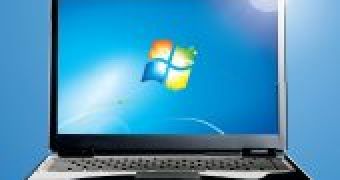Installing Windows 7 or Windows Server 2008 R2 on an offline machine can cause problems for users in terms of poor performance and extremely slow deployment times.
Customers that installed Windows 7 or its server counterpart on computers not connected physically to any network, experienced issues with the installation process itself, and with running the OS afterwards.
“It takes an excessively long time (up to 8 hours) to finish the Windows installation,” Microsoft explained. “After booting to the Windows desktop, sluggish behavior is encountered such as delayed input response or erratic mouse movement.”
According to Microsoft, this issue is generated by the way in which Windows 7 and Windows Server 2008 R2 interact with specific hardware from Intel.
The Redmond company explained that customers reported the behavior on PCs equipped with an Intel Gigabit ET Quad Port Server Adapter network interface card (NIC) that were not physically connected to a network.
“The in-box driver for this card has a known issue where it may continually try to access the NIC hardware while it is in a lower power state (D3),” the software giant explained.
“The NIC does not respond and the driver continually tries to access the NIC. This affects system performance, either manifesting itself as increasing the installation time of Windows or causing sluggish behavior once booted into Windows,” Microsoft added.
The best way to avoid any problems, even for users with computers featuring the Intel Gigabit ET Quad Port Server Adapter NIC is to simply plug in the network.
However, connecting the machine to the Internet, only to yank the cable out during the deployment process might still produce the issues, Microsoft warned.
“For Windows 7 and Windows Server 2008 R2, a new feature called DeviceSleepOnDisconnect was introduced to improve power management of unused network ports,” the software giant added.
“This new feature for Windows Server 2008 R2 exposes a driver issue that was not seen prior to enabling this feature. This feature causes the very slow installation process and computers not attached to the network during install may encounter the symptoms [above].”
In order to actually resolve the issues entirely, users need only grab the latest drivers (11.4.7 or later) from Windows Update, and update their machines.
This will only work if the computers in question actually feature an Intel Gigabit ET Quad Port Server Adapter network card.
“If you are unable to obtain the latest drivers for your Intel network card, you can instead work around this issue by ensuring that all network ports for your Intel NIC have an active network link (i.e. network cable attached) before installing Windows,” Microsoft advised.
Windows 7 RTM Enterprise 90-Day Evaluation is available for download here.

 14 DAY TRIAL //
14 DAY TRIAL //